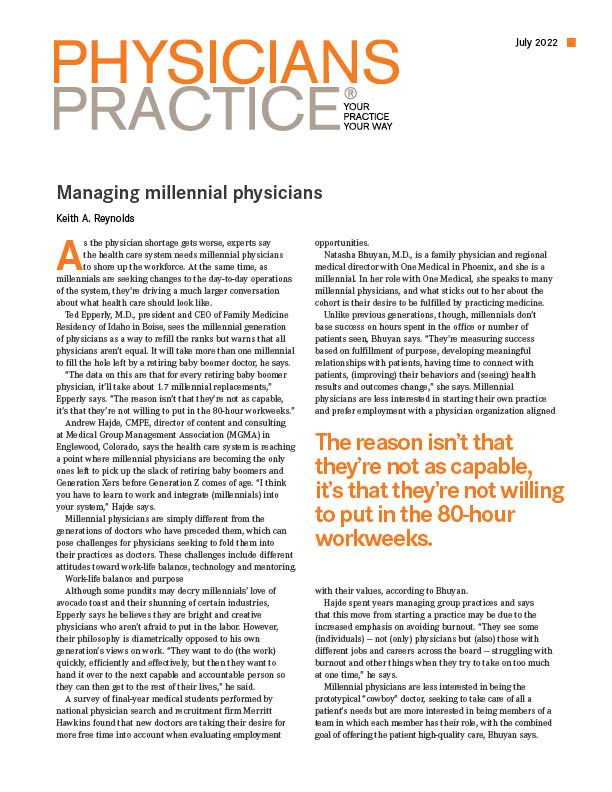Messy moments: That’s not the way we do things here
Rigidly sticking to the traditional way of doing things can be detrimental to staff wellbeing.

That’s not the way we do things here!
You’ve asked a clinician in your care group to do something differently.
That person objects.
You’ve heard it before: ‘That’s not the way we do things here!’
Or you see anger or frustration in the other’s face.
What would you like to happen here?
You decide your own intention. Possible directions here include:
- Persuade them to do it, even when you aren’t around. That means they have to want to do it. You need their buy-in. They may agree because it’s valuable for patients or for themselves
- Energize them so they see something for themselves in successful change and feel your support for them
- Show you understand what this means for them and their workday. It’s a lot more successful than anger or reprimands.
Address their anxiety or fear
- Start with acknowledgement and appreciation. Tell them something you’ve seen the person do well. Appreciate a quality they bring to the work and the group.
- Tell the resister that you’d like to understand how they feel about the way X is done now. Acknowledge those feelings genuinely whatever it is:
- ‘It’s understandable…, I bet others feel the same…’
- Ask if there is anything you dislike or wish we did better in X.
- Ask how they’d solve the situation. They’ll have ideas!
- Find out what they really care about from any solution.
- Are there principles that matter to you enough that you’d be willing to try a solution that honors those principles? This helps you find out where they can tap their own courage.
- Tell the person you’ll think about what they said
- It helps you to know what got in the way of their suggesting the possibilities before. Ask and listen carefully to the answer - in particular the emotions behind the words
- If you know the person well enough, tell them you’ve seen them use wisdom/courage/carefulness/something in their work in the past. Offer your confidence that this capacity and experience from the past will help them make this transition now.
- Acknowledge that it does require courage or at least curiosity.
- Explain how you’ll support them through whatever change is made. You’re there for them if questions or problems arise. Assure them that you’ll check in with them soon
What does this do for you and your practice?
Healthcare is more complex, uncertain and turbulent than ever before. These conditions inevitably cause distress. People were already stressed! Turbulence ratchets up discomfort.
The resistance may be fear. Will I be able to do it? Will it make the rest of my job harder? They have to give up the familiar, comfortable ways of doing things. They’re already rushed like crazy to do necessary tasks.
Anxiety and distress also jeopardize care reliability and safety.
Addressing the emotions underneath resistance is the best way forward. Emotions, not logic, drive our behavior. The perceived threat must be reduced or removed.
People need reassurance, support, psychological safety. They need information and support so they see how they can do it with ease. They need to know they don't have to be perfect. They want to know you’ll continue to value and support them.
We are always threatened by status. Our brain is always scanning – Is this person more important than I am? Less important? Imposing changes sends the signal that individuals have no say, no control over their work. This threat is magnified for people in groups with histories of being ignored, excluded, considered lesser. Anxiety or anger rises because it triggers old bad feelings.
You can soften the resistance and increase the sense of safety by knocking down the high, hard walls of rank between you.
- The more you talk together, the more you show you value their thoughts, concerns, and hopes, the more you remove the bricks in the wall between you.
- The more people feel on the same level as you with the problem and potential solution, the more you reduce the discomfort or fear of the change.
- The more you talk with them about how you can accommodate their concerns, the more they relax about what’s coming.
Your approachability and reassurances also help them feel included. You make a critical shift:
From I’m here to judge and blame you
To I’m here to support you. If you have a problem, it’s our problem.
They’ll be more likely stay in the game despite discomfort.
Nance Goldstein, MDc, ACC, PhD, partners with physicians as a leadership coach to find ways through today’s tough times and enjoy medicine more.
Newsletter
Optimize your practice with the Physicians Practice newsletter, offering management pearls, leadership tips, and business strategies tailored for practice administrators and physicians of any specialty.
